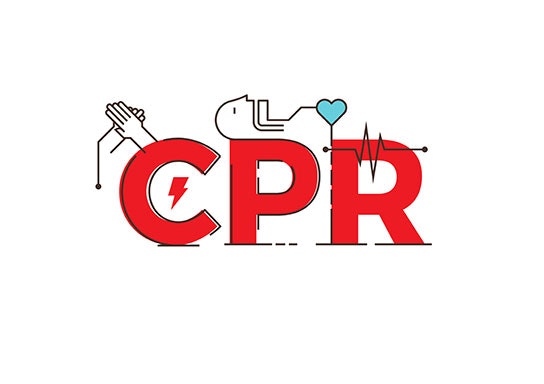CPR: Preparation, Safety, and Tips
By admin Published February 23, 2022

We encourage everyone to learn CPR and know what to do if you are in a situation where someone is in need of help. While we recommend taking a proper training course (especially if you are working with children or are caring for others daily), knowing the basics of cardiopulmonary resuscitation, or CPR, can help to save someone’s life in the event of a cardiac or breathing emergency.
CPR Basics for Adults
Here are some safety measures to learn, remember, and use in case someone needs CPR.
- First check the area for safety and use personal protective equipment if necessary.
- Check to see if the person is responsive, and if they do not respond or are gasping for breath, call 9-1-1 immediately.
- Place the person flat on their back, preferably on a firm surface.
- Give 30 chest compressions:
a. Two hands should be centered on the chest
b. Shoulders should be directly over your hands and your elbows locked
c. The depth of the compression should be at least 2 inches
d. The rate should be 100 to 120 per minute
e. You should allow the chest to return to a normal position after each compression - Give 2 breaths
a. You should open the airway by tilting the head and lifting the chin
b. Make sure that each breath administered makes the chest rise and allow the air to exit before giving the next breath
c. If the first breath does not make the chest rise, we recommend re-tilting the head and to make sure there is a proper seal before giving the second breath. If this still does not make the chest rise, there may be something blocking the airway to check for. - Continue these compression/breath cycles until help arrives or until the person is breathing on their own again.
CPR Basics for Infants
The way that you administer CPR for babies is different than how you would for an adult. Here are some step-by-step directions for how to help an infant in need of CPR.
- Check to see if the infant is responsive and call 9-1-1 immediately.
- Place the infant on their back on a flat surface.
- For a small child, use one hand for the CPR administration, and place the heel of your hand in the center of the chest and begin compressions of 100-120 per minute.
- For a baby, place both of your thumbs on the center of the baby’s chest and use your other fingers to encircle the infant’s chest toward the back to provide support.
- Using both thumbs at the same time, push hard and fast about 1.5 inches and at a rate of 100-120 per minute.
- After the compressions have been given, give 2 breaths. For both children and infants, open the airway by tilting their heads and lifting their chins.
- Continue the cycle of compressions and breaths until the breathing has stabilized or until help has arrived.
CPR Basics for Pets
CRP does not only apply to humans as animals can also have blockages to their airways or choke on objects, so here are some tips for how you can help.
- Check for breathing and a heartbeat. If you cannot find one, being CPR with chest compressions.
- Place your hands on your pet as follows:
a. For cats and small dogs, place the heel of your hand directly over their heart and place the other hand on top.
b. Push hard and fast at a rate of 100-120 compressions per minute, making sure the chest comes back to normal before compressing again.
c. Preform this 30 times. - Give rescue breaths by gently closing your pet’s mouth and extend their neck to open the airway. Make sure to cover their nose with your mouth and exhale until their chest begins to rise, repeat this again.
- Continue this cycle of compressions/breathing until your pet can breathe on its own or until their heartbeat starts again.
- Call your vet and bring your pet there asap.
How to Get Certified
There are numerous ways to get certified in CPR. We periodically offer classes for the public. Keep an eye on our website https://carbondalefire.specialdistrict.org/ for upcoming class dates. You can also check out CMC or our local hospitals for CPR course. Even if you have taken a certification course, we recommend that you take recertification courses regularly to keep your skills sharp and front of mind. If you have any questions or would like additional resources, please contact your friends at the Carbondale Fire District.
